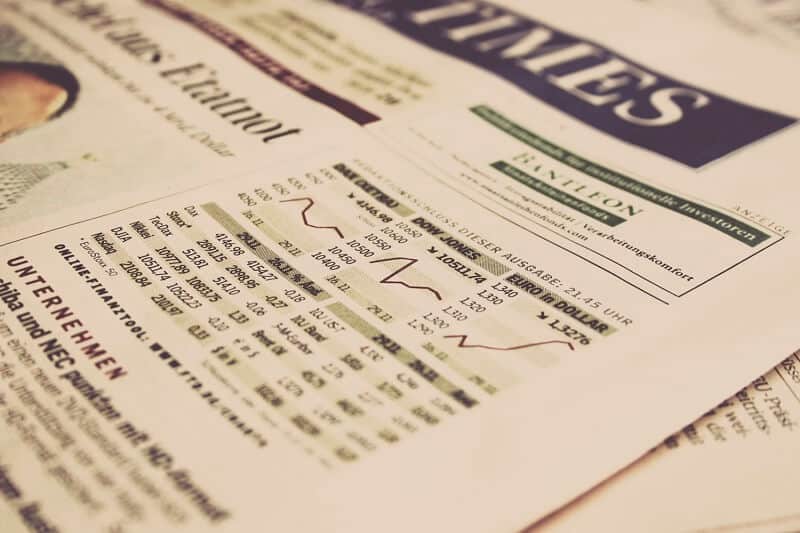
Investors use the P/E ratio to unveil the relative value of a company’s stock. Also, the P/E ratio can be used to compare a company’s historical data or to compare markets as a whole over time.
By Guy Avtalyon
The P/E ratio or price to earnings ratio calculates the market value of a stock in relation to its earnings and do it by comparing the market price per share by the earnings per share. To put this simple, the P/E ratio indicates how much the market wants to pay for a particular stock based on its current earnings.
Investors often use the P/E ratio to assess a stock’s fair market value by predicting future earnings per share.
It is one of the most broadly used methods for determining a stock value. It can show if a company’s stock price is overvalued or undervalued. But the P/E ratio can reveal a stock’s value in comparison with other stocks from the same industry. This ratio is also called a “multiple” because it shows how much an investor is willing to pay for one dollar of earnings
That is why the P/E ratio is also called a price multiple or earnings multiple. Investors use this ratio to determine how many times earnings they are willing to pay.
Calculate the P/E ratio
The formula is simple. Just divide the market value price per share by the company’s earnings per share.
P/E ratio = share price/earnings per share
Earnings per share or EPS is the volume of a company’s profit for each outstanding share of a company’s common stock. It is a kind of indicator of financial health. Earnings per share present the part of a company’s net income that would be gained per share if all the profits is paid out to its shareholders. If traders and investors want to discover the financial health of a company they use EPS.
In P/E calculation, the amount of “earnings” or “E” is provided by EPS.
P/E = EPS/Saher Price
Where the symbols show:
P/E = Price-to-earnings ratio
Share Price = Market value per share
EPS = Earnings per share
For example, at the end of the year, ABC company reported basic or diluted earnings per share of $3 and the stock is selling for $30 per share. Let’s find the P/E ratio:
EPS = $4
Share Price = $30
This ABC company P/E ratio was:
P/E = $30/$4 = $7.50
So, the company was trading at ten times earnings. So what? This indicator isn’t helpful without comparison to something. As we said, this figure has to be compared to the historical P/E scale of this company stock, or to peers from the same industry.
For example, this P/E ratio was lower than the S&P 500 (the S&P 500 average is about 15 times earnings) but we can compare this P/E ratio to peers. And we noticed that the company XYZ had the P/E ratio of 11 at the end of the same year. What can we conclude? Well, ABC’s stock is undervalued. It is lower than, for example, the S&P 500 and for the same period, had lower P/E than its peers.
You can calculate this ratio for each quarter also but it is common to calculate it at the end of the year.
Use the P/E ratio to calculate earnings yield
This is particularly useful. The formula is actually inverted P/E ratio and looks like this:
Stock’s Earnings Yield = (EPS / Share Price) x 100
or in our ABC company case:
earnings yield = (4/30) x 100 = 13.33
Can you see, to calculate the stock’s earnings yield you have to divide EPS by share price and multiply by 100 to turn it into percentages.
The earnings yield of a stock is the percentage of each dollar invested in company stocky. It is calculated by dividing earnings per share of the company to its share price.
And as you can see, our ABC company has a low P/E ratio but high earnings yield. That will always be like this, the stock with a lower P/E ratio has a higher earnings yield, and the stock with a higher P/E ratio has a lower earnings yield.
This lets you easily compare the return you are earning from the underlying company’s business to other investments. Also, this will provide you to avoid to get in bubbles, panics, and fears. It gives you an insight into the stock market and directs on the underlying economic facts.
Of course, you don’t need to perform all these math even if it is totally simple. This is especially important for beginners in the market.
The majority of stock market sites will automatically figure the P/E ratio and you can see it immediately. With help of this number, you can understand the difference between a stock that is selling at a high price because it suddenly became an analysts’ darling and a stable company that is out of analysts’ kindness and investors are selling it for a part of what it truly deserves.
The two types of EPS metrics
Forward P/E ratio
The most common types of P/E ratios are the forward (also known as leading) P/E and the trailing P/E.
The forward P/E uses expected earnings guidance instead of trailing figures. It is useful when you want to compare the current earnings to the future.
While it is helpful it also can lead you to some confusion. The main problem is that companies often underestimate earnings. The reason behind this is they want to beat the estimated P/E when they announce the next quarterly earnings. Also, some companies will declare too strong and enthusiastic the estimation but later adapt it in the next earnings report. Of course, there are always analysts to provide estimates but can confuse too.
Trailing P/E ratio
The trailing P/E the most popular P/E metric. It takes into account past performances. To calculate the trailing P/E you have to divide the current share price by the EPS earnings for the last 12 months. Investors mostly like trailing P/E because it is more objective.
But this ratio also has weaknesses since the past performances don’t guarantee future performances. It is always better to invest money based on future earnings chances.
The other problem is the EPS figure is constant. You know the stock price is changing. If some company event pushes the stock price higher or lower, the trailing P/E will not reflective of those changes in full. The trailing P/E will alter as the price of a company’s stock moves because earnings are published each quarter. On the other side, stocks trade every day. That’s why investors favor forward P/E. When the forward P/E ratio is lower than the trailing P/E, you can be sure the analysts are expecting earnings to increase. And vice versa.
What are the limitations of P/E?
The P/E ratio has some limitations. When it is low you may think the stock is good but the stock isn’t good just because it is cheap. You have to know the growth rate, free cash flow yield, dividend yield, and many other metrics also, to make a qualified decision when buying a stock.
Build a diversified portfolio that not only holds assets that were handsome but also reduces risk.



 The adjusted closing price for dividends
The adjusted closing price for dividends














